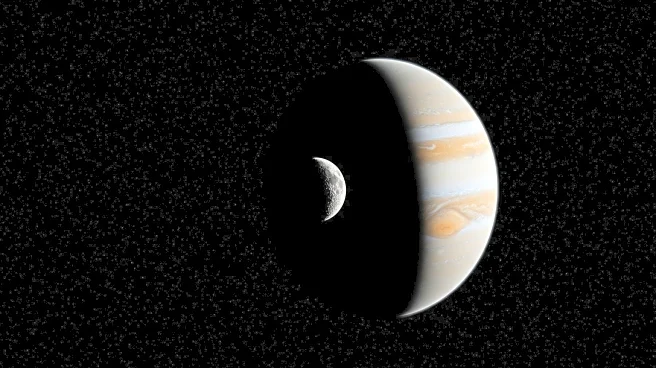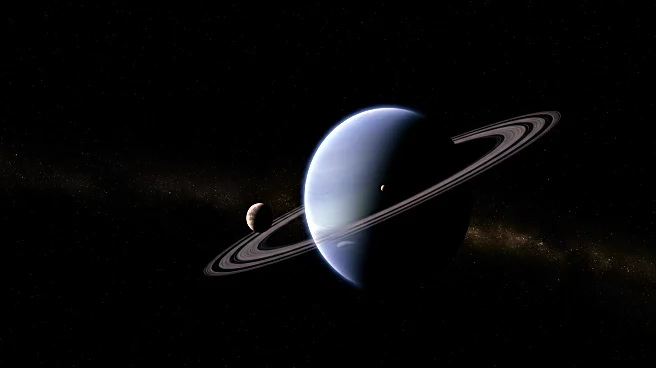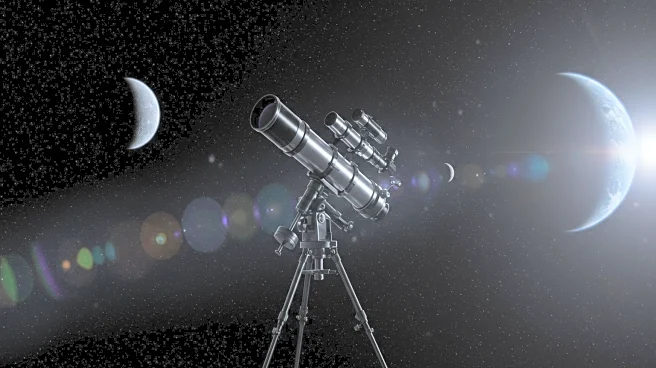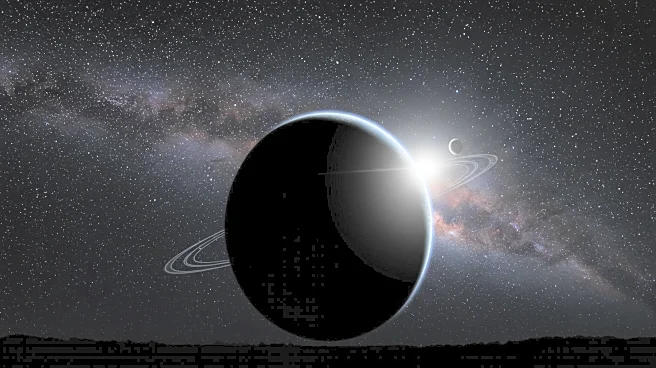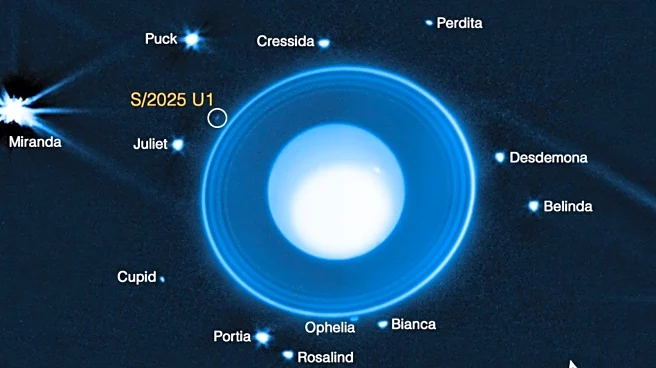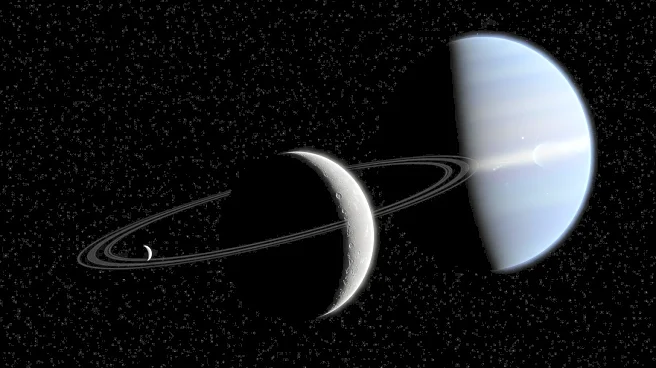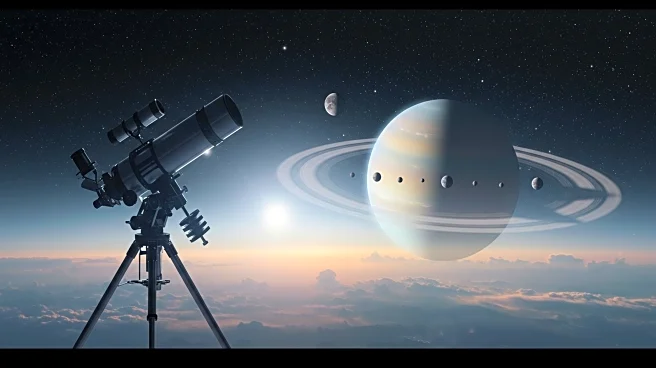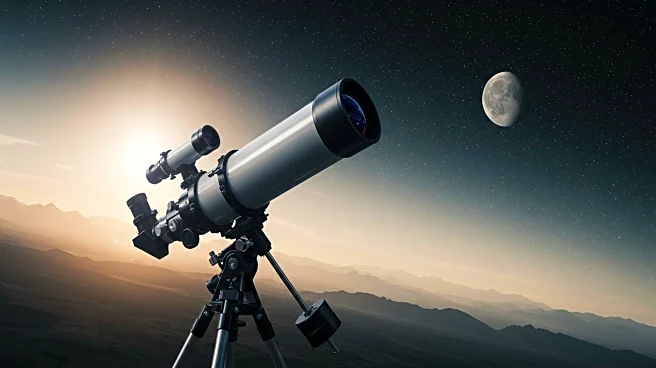What's Happening?
A team of astronomers has identified a potential new moon orbiting Uranus, which, if confirmed, would increase the planet's known moons to 29. This discovery was made using the James Webb Space Telescope (JWST), which detected a small, faint object approximately 10 kilometers in diameter, located 56,000 kilometers from Uranus. The object, currently designated as S/2025 U1, is part of Uranus' group of 13 inner moons, known for their irregular shapes and low brightness. It orbits just beyond the outer edge of the planet's main ring system. The team plans further observations to confirm its status as a natural satellite, after which it will be officially named, following the tradition of naming Uranus' moons after characters from works by William Shakespeare or Alexander Pope.
Why It's Important?
The discovery of a new moon around Uranus highlights the capabilities of the James Webb Space Telescope in advancing our understanding of the solar system. This finding suggests that there may be more undiscovered celestial bodies within Uranus' complex ring system, which could provide insights into the planet's formation and evolution. The ability to detect such small and faint objects also demonstrates the JWST's superior observational power compared to previous missions like Voyager 2 and the Hubble Telescope. This advancement in astronomical technology could lead to further discoveries, enhancing our knowledge of the outer planets and their satellites, and potentially revealing new aspects of planetary science.
What's Next?
The research team will conduct additional observations to confirm the object's status as a moon. If confirmed, the International Astronomical Union will approve an official name for S/2025 U1. The discovery may prompt further studies of Uranus' ring system and its moons, potentially leading to more findings. The success of the JWST in this discovery could encourage the scientific community to utilize its capabilities for similar explorations of other planets and celestial bodies, potentially uncovering more about the solar system's hidden complexities.
